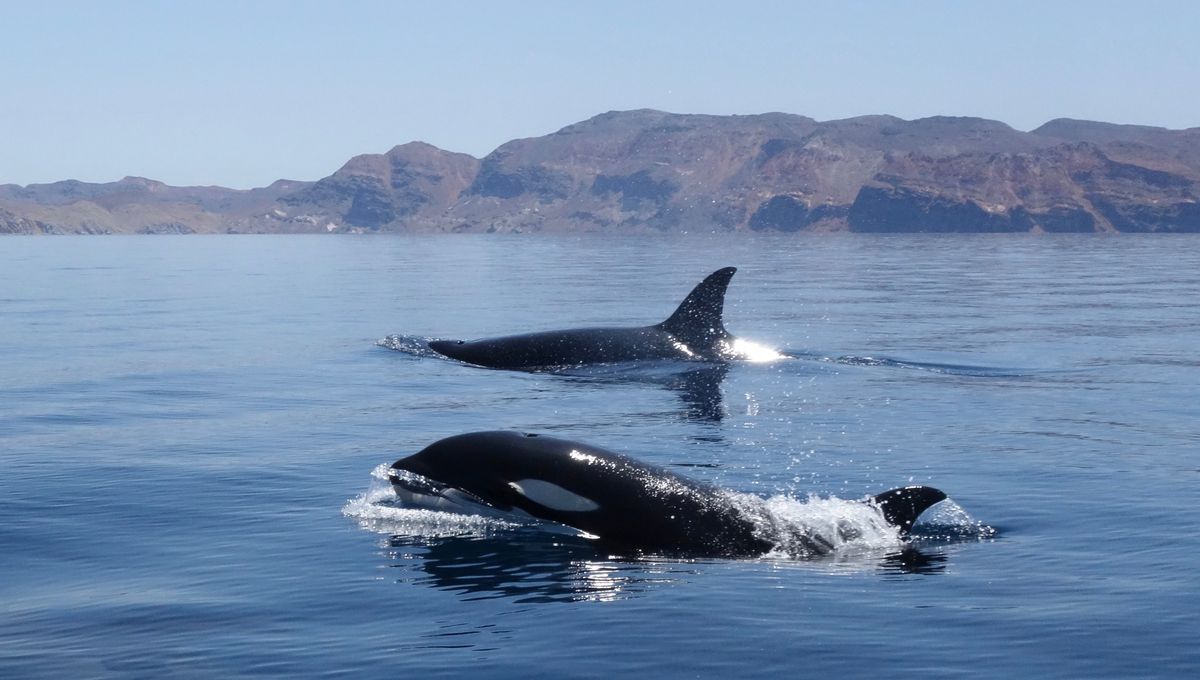
Swimming with whales is illegal in Mexico – except when it isn’t. After the discovery of loopholes within the law, tourist trips where people can take to the water with orcas have boomed in a small bay village – and experts are calling for change.
Orcas (Orcinus orca) can be found in oceans all over the world, including in the subtropical Gulf of California. Here, in places like Mexico’s La Ventana Bay, whale-watching is a popular attraction. It’s a pastime that’s also subject to regulation.
Under the Official Mexican Standard NOM-131-SEMARNAT-2010, swimming, as well as diving, fishing, waterskiing, and paragliding, are all illegal while on whale-watching trips. However, while the legal document specifically references eight species of baleen whale (or more, depending on how you classify Bryde’s whales) and one species of toothed whale, the sperm whale (Physeter macrocephalus), there’s no explicit mention of orcas.
In another legal loophole, NOM-059-SEMARNAT-2010 classes orcas as a species that, while not under threat of extinction, is subject to special protective measures. That includes regulations to stop them from being captured or harmed – but it doesn’t mean people can’t swim with them.
The result is throngs of people taking to the water with so-called “seafaris” and scuba diving trips in La Ventana Bay, particularly in the months when sightings of orcas, as well as other marine megafauna, are at their highest.
“We thought it was a great thing at the beginning but it has become kind of a nightmare,” Evans Baudin, who owns the Baja Shark Experience and has previously taken people to swim with orcas, told the Guardian. “It’s completely out of control. Since there are no authorities or rules, anyone can do whatever they want.”
One concern about this rampant activity is that people could get hurt. While it’s worth noting that there’s no documented instance of a fatal attack by a wild orca, the possibility that they could cause injury can’t be entirely ruled out.
“I have never been in the water with killer whales and would not recommend it,” Volker Deecke, Professor of Wildlife Conservation at the Institute of Science and Environment, University of Cumbria, and killer whale expert, told IFLScience in 2024. “While they are unlikely to be overtly aggressive to people, they are big powerful animals, and can cause injury even accidentally if disturbed. Treat them like you would a grizzly bear.”
Another major worry is the effect that all this activity could have on the orcas’ behavior; previous research has shown that vessel noise can interfere with orcas’ ability to find and capture food. If things continue as is, this may eventually drive the orcas away from the bay.
There could soon be change on the horizon, however. Experts, including marine biologists and even some tour operators, have teamed up to develop a plan that would manage the orca population in La Ventana Bay.
This plan would see permits required for boats wanting to take tourists out to interact with orcas. The number of these permits and boats would be limited each day, and the money reinvested in training and enforcement.
“The goal is to teach captains and guides how to read the whales’ behaviour so they know when to interact with the animals, how to do so safely, and when to give the orcas space,” said marine biologist Georgina Saad, who was part of the team behind the plan, to the Guardian.
The team’s plan is reportedly currently under review by the Mexican government, with an outcome expected this summer.
[H/T: The Guardian]
Source Link: Tourists Swimming With Orcas In Mexico As Tour Guides Exploit Legal Loopholes